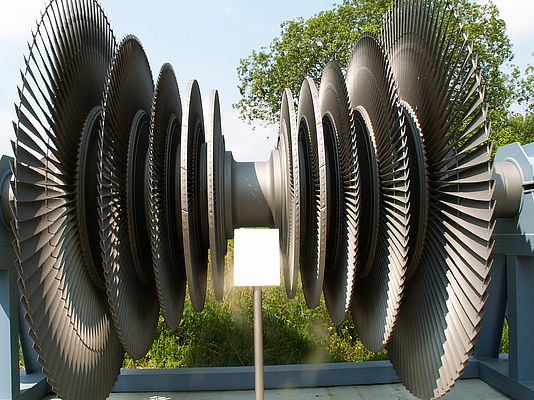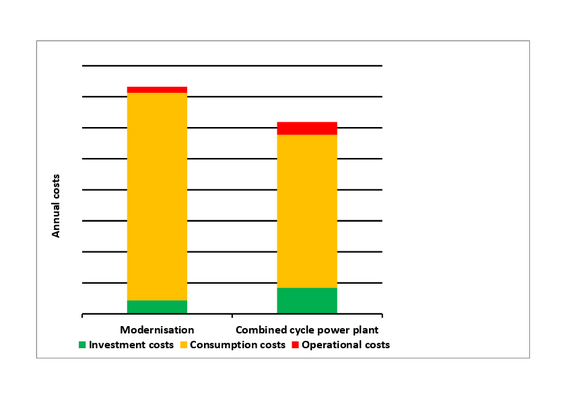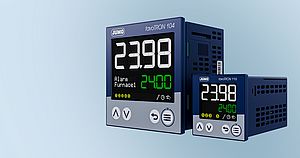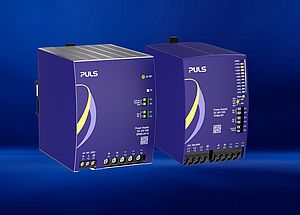Does it make good economic sense to increase the share of electric power generated in-house? This was the question faced by a large German dairy company that currently operates an older steam boiler with a steam turbine to produce the heat and electricity needed for its production processes. In the future, the dairy company's in-house generation of electricity could be improved by installing a new gas turbine with waste-heat recovery boiler. The question is whether the investment costs are in proportion to the benefits achieved. A detailed cost-benefit analysis delivers the answers to this question.
High efficiency, short start-up times and rapid load cycles - gas and steam turbine units use fuels very efficiently and offer flexible operation. These advantages are of great interest to the dairy company, which needs both electricity and large quantities of process steam in its production facilities for production steps including heating and sterilizing the dairy products. So far, the dairy company has covered its steam demand with multiple in-house steam boilers. The company already has some experience with in-house generation of electricity: in its current system, some of the steam is expanded in a steam turbine and reduced to the level of pressure and temperature needed in production. The electricity produced in this process is also used in the production processes, covering part of the dairy company's electricity demand. Any electricity needed on top of this is then bought from an external energy supplier. One of the existing steam boilers is now in need of modernisation and an alternative form of technology, i.e. replacement of the steam boiler by a new gas-turbine unit with waste-heat recovery boiler and supplementary firing, may offer additional benefits. The gas turbine in combination with the existing steam turbine would form a combined-cycle power plant. This alternative might offer economic benefits, as the additional gas turbine and its high efficiency ratio and the improved fuel efficiency would increase the amount of electricity generated in-house and thus reduce the quantity of electricity that had to be purchased from external sources at increasingly high costs.
Modernisation or replacement by a combined-cycle power plant?
What investment costs and operational costs are anticipated? Are cost savings feasible that would justify a decision in favour of an expensive combined-cycle power plant? Or will it ultimately make better economic sense to modernise only the existing steam boiler? For an objective investment decision, the dairy company contacted three plant manufacturers to obtain quotations and commissioned the energy experts at TÜV SÜD Industrie Service GmbH to draw up cost-benefit and scenario analyses. The analyses were based on the dairy company's actual load profiles of electricity and steam demand from the previous year. The data were then used to estimate the future load cycles of electricity and steam demand; these will change as the company plans to increase its production and has installed a new mechanical evaporator that will cause electricity consumption to go up and steam consumption to go down. Starting from these demand-related load profiles, the experts then derived the two possible future scenarios of energy supply - modernisation of the old steam boiler (modernisation solution) or installation of an additional gas turbine unit with waste-heat recovery boiler (combined-cycle solution). Both solutions enabled load profiles to be simulated for the electricity generated in the gas and steam turbine and the remaining share of electricity purchased from the network.
The annual energy budget is what counts
These data were then used to create an annual energy budget for both the modernisation and the combined-cycle solution. The result showed that while the combined-cycle power plant would cause the dairy company's fuel input to rise only marginally, the electricity output - and thus the amount of electricity produced in-house - would more than double. The in-house capacity would be high enough to cover the company's electricity demand for long periods of the year. As the mode of operation of the combined-cycle power plant will be aligned primarily to the dairy company's demand for process heat, the in-house generation of electricity is expected to slightly exceed demand, so that the surplus can be fed into the grid. TÜV SÜD's energy-efficiency experts then determined the investment, operational and annual costs of the combined-cycle power plant and compared them to those of the alternative, i.e. modernisation of the existing steam boiler system.
To do so, the experts analysed the quotations and data provided by the three manufacturers (e.g. efficiency ratios) and the dairy company's current electricity and fuel costs. Further external factors that ultimately influence the cost structure were also taken into account (e.g. taxes and levies on energy carriers, Germany`s Renewable Energy Law (EEG levy), state subsidies and tax benefits, costs of carbon credits within the scope of emissions trading).
What if framework conditions changed?
Carrying out comprehensive and detailed sensitivity analyses, the experts examined how individual factors would impact on cost effectiveness and whether cost-effective implementation of the solution and profitable operation of the combined cycle power plant would still be possible if framework conditions changed. For this purpose, they assumed increases in gas and electricity prices and analysed how these would impact on cost effectiveness. The worst-case scenario revealed the project's economic limits. This scenario factored in skyrocketing costs of fuel and carbon credits, the ending of subsidies and tax benefits, and changes concerning the EEG levy. This type of sensitivity analysis is particularly important as framework conditions may change dynamically from project planning to realisation. The current amendment of Germany's Renewable Energy Law, which came into effect on 1 August 2014, is only one example. According to this amendment, a share of the EEG levy paid for the electricity generated by new plants will have to be paid over to the network operator in the future. Germany's Renewable Energy Law, Article 61, includes more detailed regulations. Using the data obtained from the cost-benefit and sensitivity analyses, the specific impact of this legal amendment can be determined, additional costs exactly quantified and cost-effectiveness reviewed. Given this, investment decisions are placed on a solid economic basis.
Go-ahead for the quotations submitted by manufacturers
TÜV SÜD's experts also checked the technical plausibility of the quotations submitted by manufacturers. A thermal simulation model examined whether the gas turbine, waste-heat recovery boiler and supplementary firing were suitably dimensioned for the load cases expected in the dairy company. How will the components in the combined-cycle power station interact in various load situations? The experts passed all three quotations, meaning there are no fundamental doubts concerning their technical suitability. According to the assessment by the TÜV SÜD experts this decision also rests on a reliable, valid basis. Overall, the comprehensive analyses show that investment in a gas turbine with waste-heat recovery boiler and supplementary firing provides significant cost benefits to the dairy company.
At almost identical fuel inputs, the amount of electricity produced in-house can be increased and thus the amount of electricity that has to be purchased from external sources significantly reduced. While framework conditions (energy prices, taxes, EEG levy) significantly impact on the actual level of savings, sensitivity analyses in particular reveal that the life-cycle costs of the combined-cycle solution are lower than those of the alternative solution, i.e. steam-boiler modernisation. The cost-benefit analyses and the third-party analysis of the two solutions have provided the dairy company with a valuable basis for decision-making and for setting course for a future characterised by safe and cost-efficient energy supply.
By Dipl.-Wirt.-Ing. Juliane Braenzel, Energy Systems Division, TUV SUD Industrie Service GmbH






























































